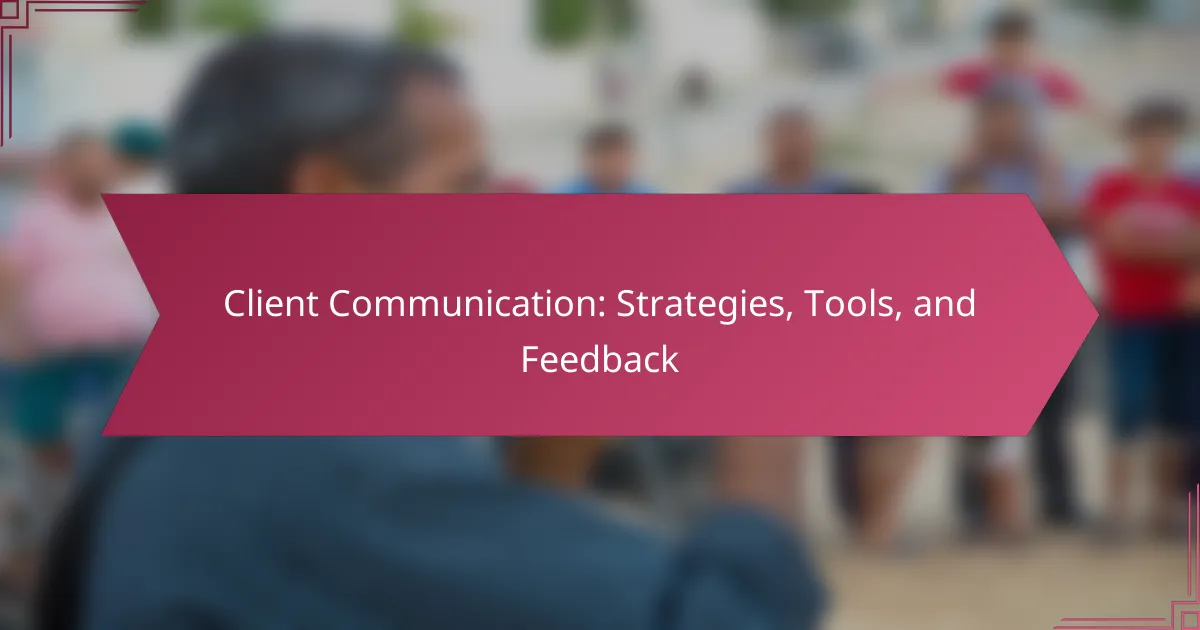Effective client communication is essential for building strong relationships and ensuring that clients feel valued and understood. By employing clear strategies and utilizing appropriate tools, businesses can enhance interactions and foster collaboration. Additionally, gathering structured feedback allows for continuous improvement and a deeper understanding of client needs.
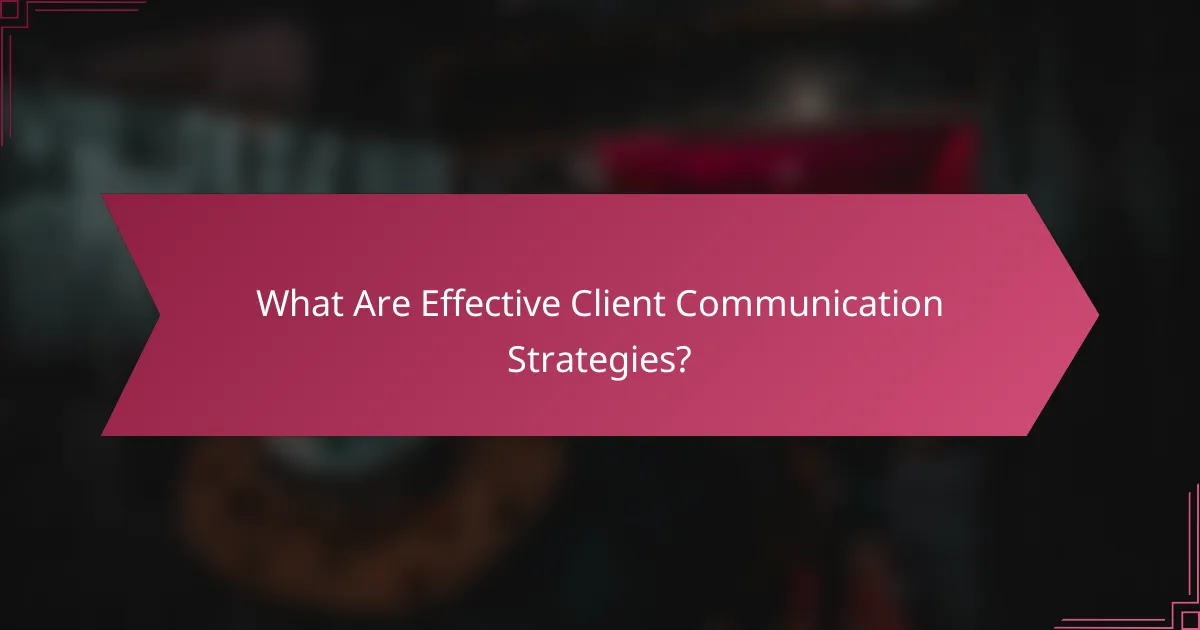
What Are Effective Client Communication Strategies?
Effective client communication strategies involve clear, consistent, and empathetic interactions that foster strong relationships. These strategies ensure that clients feel heard, informed, and valued throughout the engagement process.
Active listening
Active listening is crucial for understanding client needs and concerns. It involves fully concentrating on what the client is saying, rather than just passively hearing their words. Techniques include nodding, summarizing their points, and asking clarifying questions.
To practice active listening, set aside distractions and focus entirely on the conversation. This not only builds trust but also helps in accurately addressing client issues and expectations.
Clear messaging
Clear messaging ensures that clients understand your points without confusion. Use straightforward language, avoid jargon, and be concise. This clarity helps prevent misunderstandings and keeps the communication efficient.
When delivering messages, consider using bullet points for key information or summarizing complex ideas in simple terms. This approach can enhance comprehension and retention of important details.
Regular updates
Regular updates keep clients informed about project progress and any changes that may arise. Establish a routine for updates, whether weekly or bi-weekly, to maintain transparency and manage expectations.
Utilize various channels for updates, such as email summaries or project management tools, to cater to client preferences. This consistency helps clients feel engaged and reduces anxiety about project status.
Empathy in interactions
Empathy involves understanding and acknowledging the client’s feelings and perspectives. This approach fosters a supportive environment where clients feel valued and respected. Demonstrating empathy can enhance rapport and strengthen the client relationship.
To show empathy, validate client concerns and express understanding of their challenges. Simple phrases like “I understand how that feels” can go a long way in building trust and connection.
Setting expectations
Setting clear expectations from the outset helps prevent misunderstandings and disappointment. Discuss project timelines, deliverables, and communication frequency to ensure everyone is on the same page.
Consider creating a written agreement that outlines these expectations. This document can serve as a reference point throughout the project, helping to keep both parties accountable and aligned.
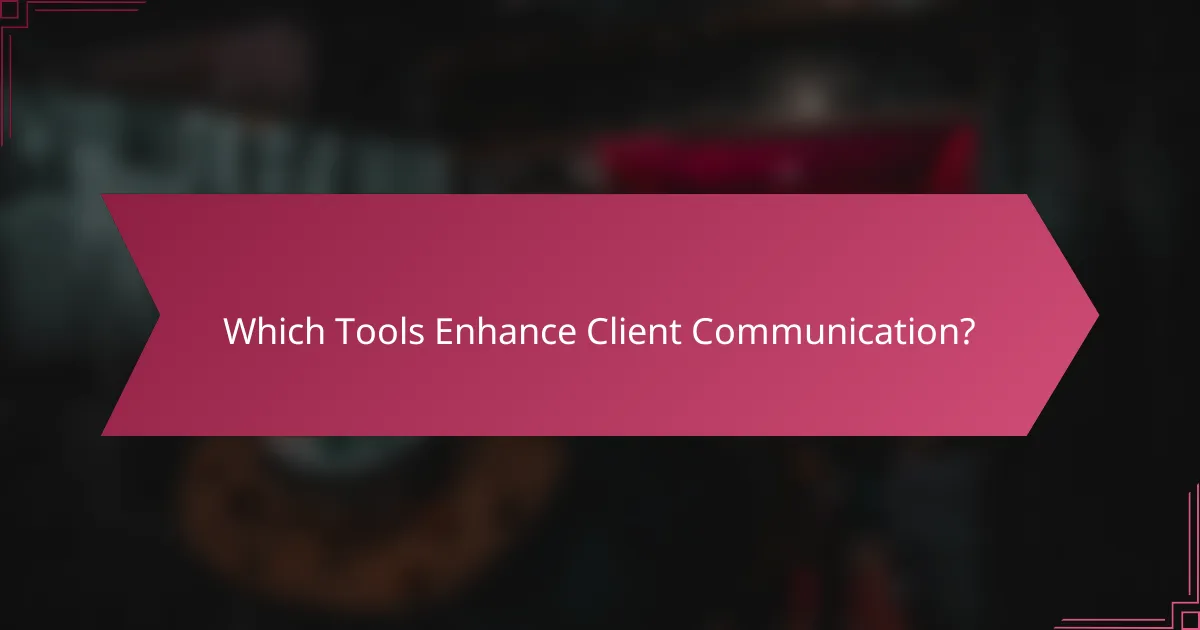
Which Tools Enhance Client Communication?
Effective client communication relies on various tools that facilitate interaction, collaboration, and feedback. Utilizing the right tools can significantly improve clarity and responsiveness, ensuring that client needs are met efficiently.
Slack for real-time messaging
Slack is a popular platform for real-time messaging that allows teams to communicate instantly. It supports channels for different topics, direct messaging, and file sharing, making it easy to keep conversations organized.
To maximize Slack’s effectiveness, create dedicated channels for specific projects or clients. This helps maintain focus and ensures that relevant information is easily accessible. Be mindful of notification settings to avoid overwhelming team members with messages.
Zoom for video conferencing
Zoom is widely used for video conferencing, providing a reliable way to conduct face-to-face meetings remotely. It offers features like screen sharing, breakout rooms, and recording options, which enhance the meeting experience.
When using Zoom, ensure that all participants have a stable internet connection and are familiar with the platform’s features. Schedule meetings in advance and send reminders to keep everyone on track. Aim for concise agendas to respect participants’ time.
Trello for project management
Trello is a visual project management tool that uses boards, lists, and cards to organize tasks and workflows. It allows teams to track progress and collaborate effectively on projects.
To get the most out of Trello, create boards for each client or project and use labels to categorize tasks. Regularly update the status of tasks and encourage team members to comment on cards for feedback. This transparency helps keep everyone aligned and accountable.
Mailchimp for email marketing
Mailchimp is an email marketing platform that enables businesses to design, send, and analyze email campaigns. It offers templates, automation features, and analytics to track engagement and performance.
When using Mailchimp, segment your audience to tailor messages effectively. Monitor open rates and click-through rates to gauge campaign success. Avoid sending too many emails to prevent subscriber fatigue, aiming for a balanced frequency that keeps clients informed without overwhelming them.
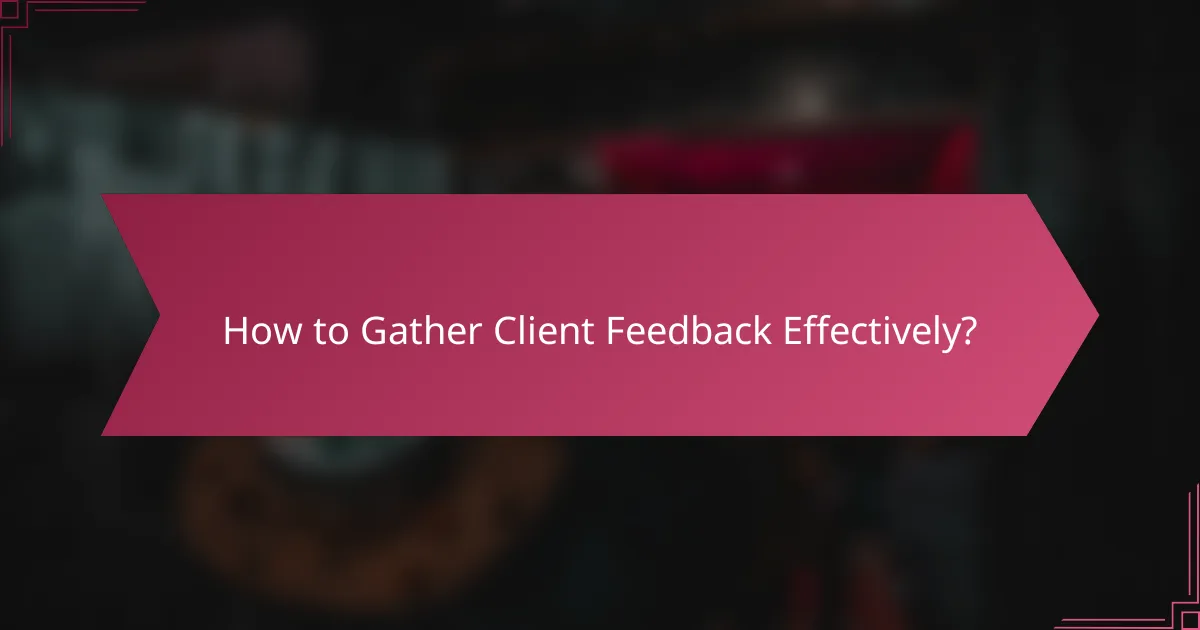
How to Gather Client Feedback Effectively?
Gathering client feedback effectively involves using structured methods to collect insights that can guide improvements. Employing a combination of tools and strategies ensures comprehensive understanding and actionable results.
Surveys and questionnaires
Surveys and questionnaires are popular tools for collecting client feedback due to their ability to reach a large audience quickly. They can be distributed online or via email, and should include a mix of closed and open-ended questions to capture both quantitative and qualitative data.
To enhance response rates, keep surveys concise, ideally taking no more than 5-10 minutes to complete. Offering incentives, such as discounts or entry into a prize draw, can also encourage participation.
Follow-up calls
Follow-up calls provide a personal touch that can yield deeper insights into client experiences. These calls allow for real-time interaction, enabling you to ask clarifying questions and explore feedback in more detail.
When conducting follow-up calls, prepare a set of open-ended questions to guide the conversation while allowing clients to express their thoughts freely. Aim to keep calls brief, around 10-15 minutes, to respect clients’ time.
Feedback forms
Feedback forms are a straightforward way to gather client opinions immediately after an interaction or service. They can be integrated into websites, apps, or sent via email, making it easy for clients to provide input at their convenience.
Design feedback forms to be user-friendly, with clear instructions and a mix of rating scales and open text fields. Consider limiting the number of questions to avoid overwhelming clients, focusing on key areas of interest.
Client interviews
Client interviews are in-depth discussions that can uncover valuable insights about client needs and satisfaction levels. These interviews can be conducted in person or virtually, allowing for flexibility in scheduling.
To conduct effective client interviews, develop a semi-structured format that includes key topics while allowing for organic conversation. Aim for interviews to last 30-60 minutes, and ensure to follow up with a summary of the discussion to confirm understanding and build rapport.
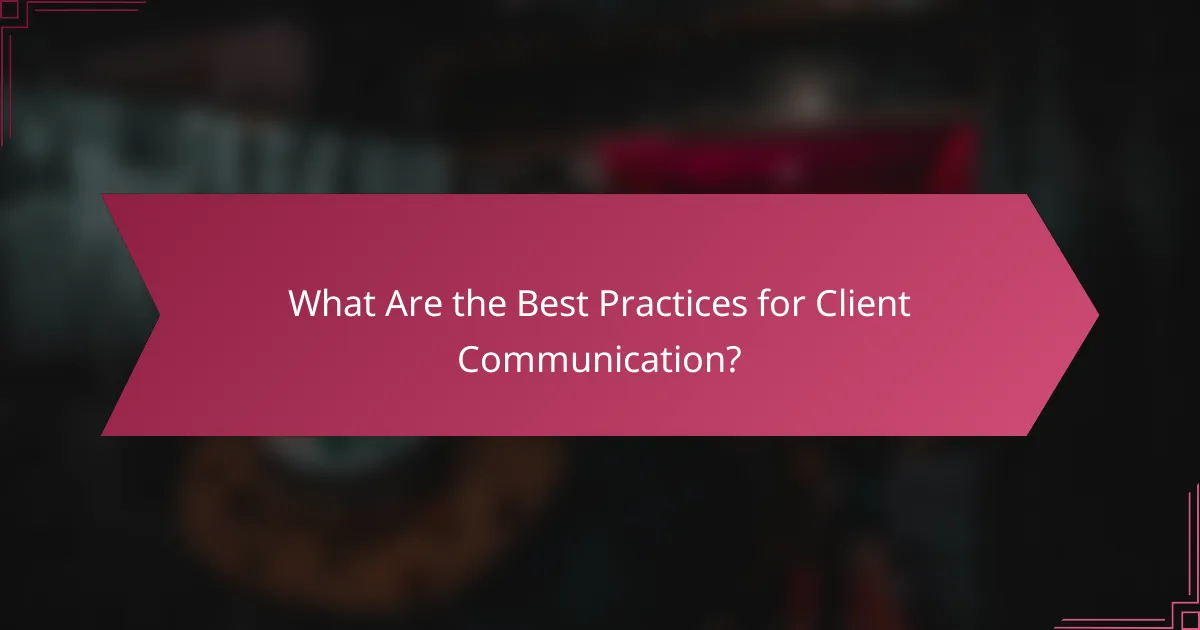
What Are the Best Practices for Client Communication?
Effective client communication hinges on clarity, responsiveness, and personalization. By employing best practices, businesses can foster stronger relationships and ensure client satisfaction.
Personalization of messages
Personalizing messages enhances client engagement and builds trust. Use the client’s name, reference past interactions, and tailor your communication style to match their preferences.
Consider segmenting your clients based on their needs or interests. For instance, if a client frequently inquires about product updates, prioritize sharing relevant information with them. This approach demonstrates attentiveness and understanding.
Timely responses
Responding promptly to client inquiries is crucial for maintaining a positive relationship. Aim to reply within a few hours for urgent matters and within one business day for less pressing issues.
Establish clear expectations for response times and communicate them to clients. For example, if you typically respond to emails within 24 hours, let clients know. This transparency helps manage their expectations and reduces frustration.
